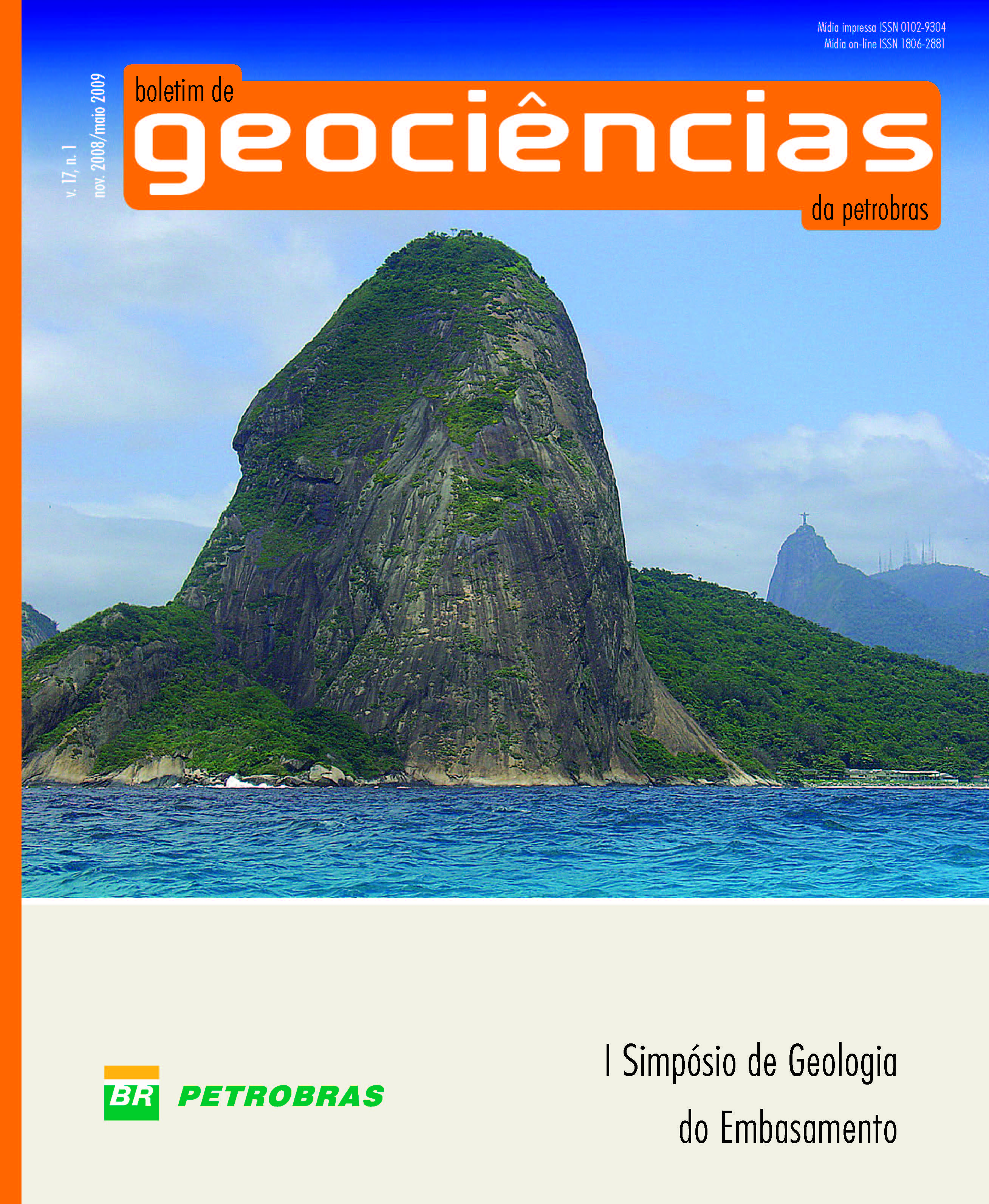Concepts, key features and seismic examples of extensional fault-related folds in the rift section of Campos and Santos basins
Keywords:
extensional fault-related folds, fault-bend folds, fault-propagation folds, seismic expressionAbstract
With the exception of the salt-related rollover folds of the Brazilian Continental Margin, folds are not features commonly associated with extensional faults. N-S-trending folds are common features in the hanging wall or above the termination of normal basement faults of the pre, syn and post-rift sequences of the Campos and Santos basins. Regional compression, differential compaction and local transpression are interpreted as the main reasons to explain the formation of folds in the Brazilian margin. However, they can also be formed as a result of the interplay among kinematics, amount of slip and geometry of faults. Two main types of fault related folds are strongly influenced by geometry and kinematics: (i) fault-bend folds and (ii) fault-propagation folds. Fault-bend folds are flexures formed as a result of dip changes of the fault plane. The folds are formed by the collapse of the hanging wall block as it passes over the top of bends in the fault plane. Fault-propagation folds form when movement of basement faults propagates deformation above their tip into a stratified rift and/or post-rift sequence. In this case, the movement of the buried normal fault produces folding in the overlying rocks, without expressive rupture of the beds. Movement along these folds can be accompanied by flexural slip mechanisms, allowing their lateral migration away from the fault plane and the formation of fold swarms like those in the Campos and Santos basins. The strong geometrical relationships of fault-bend and fault-propagation folds not only facilitate the predictive interpretation of these structures in seismic sections, but also allow measurement of stretching, reservoir quality predictions and fracture intensity estimates. In the Campos and Santos basins, regionalscale fault-bend and fault- propagation folds might be responsible for the structural control of basement highs and depressions, distribution and migration of
depocenters, and location of fractured zones. Fold swarms above the termination of buried normal folds commonly present in the Santos Basin rift sequence, can be the result of fault-propagation folds. Seismic examples of the Campos and Santos basins are used in this study to introduce the significance of extensional fault-related folds and their application to exploration. The new discoveries in the Brazilian margin launched many efforts to increase the seismic quality of the rift. However, it is difficult to image great depths and thick salt layers. Nonetheless, it is clear that the rift architecture controls many of the sedimentary sequences during their formation. The identification of extensional fault-related folds in the basement and rift sequences is crucial to interpret deep structures. The correct interpretation of extensional fault-related folds avoids misinterpretation of seismic sections and gives a better understanding of sediment dispersal, distribution of fractured zones, identification of migration paths, improved geometrical definition of traps and volume estimates.
Downloads
Published
Issue
Section
License
This license enables reusers to distribute, remix, adapt, and build upon the material in any medium or format, so long as attribution is given to the creator. The license allows for commercial use.




